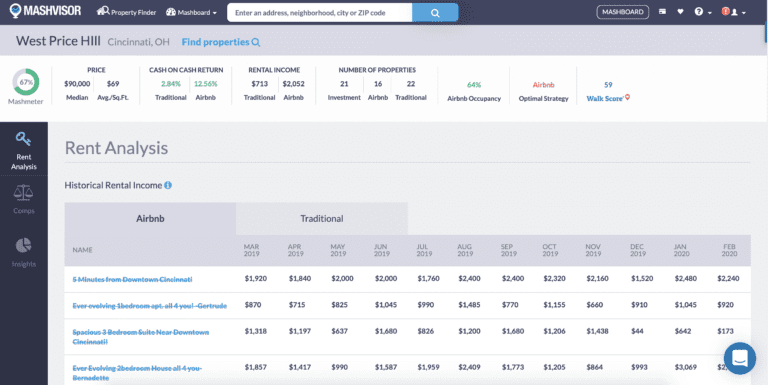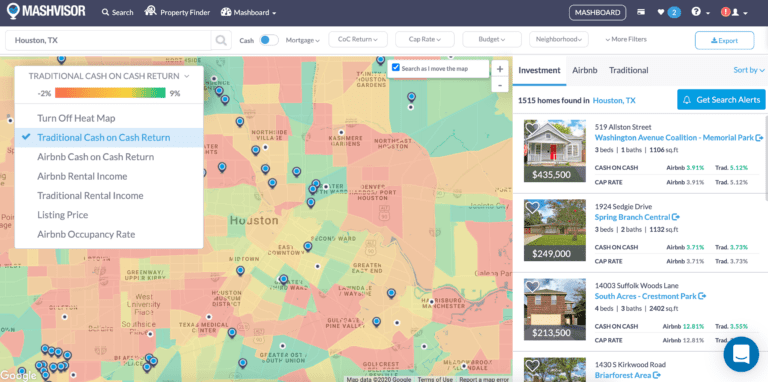How to Evaluate a Neighborhood Before Investing
Where to Buy Florida Multi Family Homes for Sale
If you are looking to invest in real estate, thorough research and evaluation is key to finding a profitable investment property. One of the main factors you need to consider before you invest is location. You’ve probably heard of the popular real estate mantra “location, location, location“ a number of times. That’s because it holds a lot of weight.
Regardless of your investment strategy, location is the main factor that will determine the profitability of an investment property. And to find the best places to invest in real estate, you need to conduct a thorough market analysis at both the city level and neighborhood level. If you have a real estate market in mind, a neighborhood analysis will help you identify an area with the highest performance before you search for an investment property.
While the overall housing market might be performing well, some specific neighborhoods may not be doing so well. That’s why you need to evaluate a neighborhood before buying investment property. Here’s how to ensure that you are investing in the right neighborhood.
How to Evaluate a Neighborhood
1. Assess Proximity to Amenities
A great neighborhood should have most of the important amenities such as good schools, restaurants, shops, grocery stores, parks, gyms, and medical facilities. Areas with such amenities appeal to potential renters because they are convenient. Tenants will tend to look for rental properties that are in close proximity to many desirable amenities. Therefore, the availability and quality of amenities in a neighborhood can determine the investment potential.
Related: 6 Neighborhood Amenities for a Successful Residential Investment Property
2. Look at Job Availability
Another way to evaluate a neighborhood is to look at job availability. Availability of employment will attract more job seekers to the neighborhood, thus increasing the demand for rental properties. Economically thriving neighborhoods with consistent employment opportunities will have fewer vacancies and ensure great returns.
3. Check the Crime Rates
Crime rates can have a significant effect on the demand for rental properties in an area. For most tenants, safety is top of mind when choosing where to stay. They want to live in neighborhoods that are safe and crime-free. Therefore, before you make your investment decision, check historical and current crime statistics with local law enforcement agencies. A neighborhood with a low crime rate can help keep vacancy rates low and property values high.
4. Look at the Number of “For Rent” and “For Sale” Signs
Another thing to look for when you evaluate a neighborhood is the number of “For Rent” and “For Sale” signs. A large number of “For Rent” signs depicts that there is a low demand for rental properties in the neighborhood or there are too many rental properties. Up-and-coming neighborhoods usually have a low vacancy and high demand for rentals. While more “For Sale” signs can indicate that you may get a good deal, in the long run, it can be a red flag. Why would so many people sell their properties if the area is a desirable one?
5. Determine the Neighborhood’s Accessibility
Accessibility is also an important factor to consider when evaluating a neighborhood. People prefer to live in areas where they can easily commute to and from work or school. So you want to invest in a neighborhood with easy access to major roads and public transportation.
Related: Invest in the Most Walkable Cities in the US That Are Affordable
6. Gauge the Pride of Ownership
Another great way to evaluate a neighborhood is to hop in your car, drive around, and get a first-hand experience of the area. You can understand the individual personality of the neighborhood based on its general appearance.
You’ll see the overall pride of ownership depending on how the properties are kept, whether the lawns are mowed, the quality of landscaping, how the streets are, etc. You want to buy an investment property in a neighborhood where people are proud to live and homeowners care for their properties and community. Aesthetically pleasing areas tend to attract more renters.
How a COVID-19 Vaccine Could Impact the US Housing Market 2021
7. Find Out About the Development Plans
When you set out to evaluate a neighborhood, you shouldn’t just look at the present features only. Remember, you want to invest in a neighborhood that is good but also improving over time. Plans for new roads, hospitals, schools, shopping centers, and other amenities can dramatically improve the value of homes in the neighborhood.
These new developments and businesses also bring in more jobs. All these people will need a roof over their heads. When an area remains static in terms of development, it could be that it is not as desirable.
8. Use Mashvisor’s Heatmap and Data
Researching neighborhood data is one of the best ways to evaluate a neighborhood. The first piece of neighborhood data you’d probably want to know is the average listing price and whether it fits your budget. Apart from affordability, you want to invest in an area with a high potential for profits. You can assess the profitability potential of a neighborhood using a number of real estate metrics.
It’s also a good idea to compare the neighborhood to others in the city – perhaps there is a better place to invest in real estate? Rather than looking at each neighborhood, one by one, compare the key metrics at once using Mashvisor’s real estate heatmap. It’s the easiest way to analyze neighborhood data. This is an interactive real estate map that uses different colors to show the difference in the performance of different neighborhoods in your city of choice.
You can customize your neighborhood analysis using the following filters:
- Listing Price
- Traditional Rental Income
- Airbnb Rental Income
- Airbnb Occupancy Rate
- Traditional Cash on Cash Return
- Airbnb Cash on Cash Return

Use Mashvisor’s real estate heatmap for a comparative evaluation of neighborhoods.
For each of the above metrics, neighborhoods with the highest values are marked in green while those with the lowest are marked in red.
Once you’re sure you are evaluating a top neighborhood in the city, get more data by looking at Mashvisor’s Neighborhood Analytics page for that area:

Easily evaluate a neighborhood using data from Mashvisor.
Sign Up for Mashvisor
The Bottom Line
When it comes to real estate investing, nothing is more important than location. Buying an investment property in a bad neighborhood can erode its value and lower returns. So before you buy an investment property, it’s important that you do your research to ensure that the neighborhood is the best choice. Make sure the neighborhood has most of the above desirable characteristics such as good schools, quality amenities, low crime rates, etc. This will help ensure that your investment property generates good income consistently and appreciates in value over time.
Related: The 6 Real Estate Research Steps Investors Should Follow
Start Your Investment Property Search!
Neighborhood Analysis
What Are the Signs of a Housing Bubble?





Recent Comments